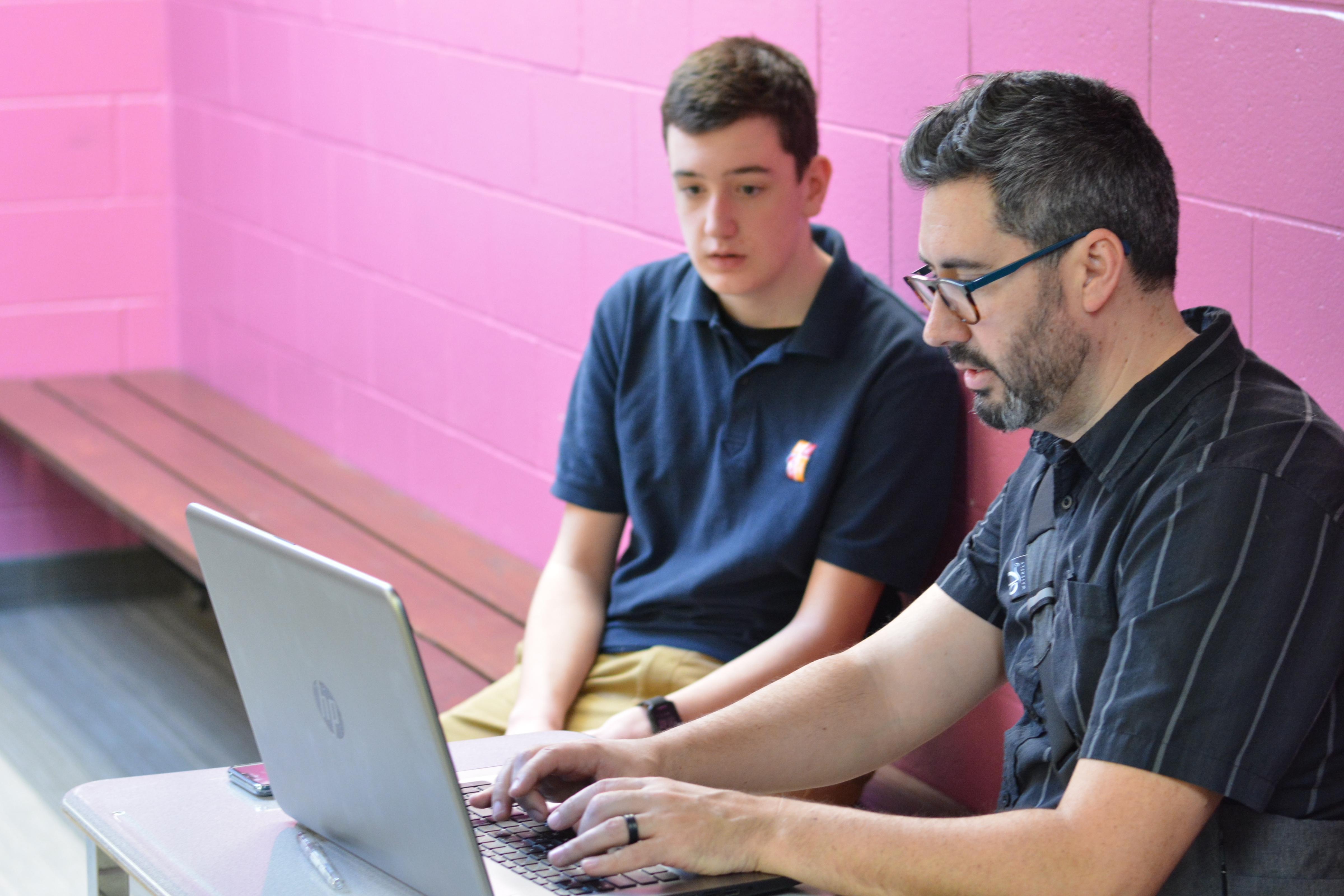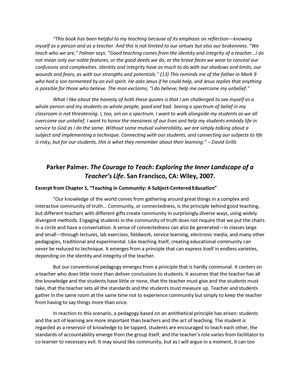“Any questions?” the teacher asks. No hands are raised. Students glance around, waiting until the teacher moves on.
This is a common classroom scene, but it’s one that David Grills has been working to change. In his Bible classes at Hamilton District Christian High School in Ontario, Canada, he aims to make student questions a staple of learning. His classroom is centered on student-driven learning—an approach that wouldn’t work without students’ curiosity. David no longer asks, “Do you have any questions?” but “What questions do you have?”
“When students have a voice, they are contributing to and directing their learning,” David noted. “By giving students the opportunity to wonder about the content in your class and then practice asking better and better questions, students develop the skills to do the hard work of digging into the Bible.”
We asked David to share how he has helped students formulate lists of questions, regularly—not for the purposes of simply answering them all, but as the springboard for further group work, discussion, or review. Here are eight tips we gathered.
1. Increase the Quantity of Student Questions
We can “normalize” questions by giving students much more practice in asking questions. Consider beginning with Question Formulation Technique (QFT). This technique is a brainstorming process guided by four rules: 1. Ask as many questions as you can. 2. Do not stop to discuss, judge, or answer the questions. 3. Write down every question exactly as it is stated, and number them. 4. Change any statement into a question.
This process focuses on generating a large quantity of questions. It can be done as a full class with the whiteboard or in small groups on poster board. You may need to remind students that, since the goal is to brainstorm, it is not a time to discuss, answer, or evaluate questions. Every question should receive the same response, such as a simple “Thanks” (not “Good! Excellent!”). As QFT is practiced, you may find increasing ways it can be used: at the beginning of a unit as a diagnostic, to generate curiosity, or at the end of a unit as review, to provide paths for future inquiry.
2. Improve the Quality of Questions
As students become comfortable with asking questions, begin to differentiate between closed-ended questions (which can be answered with one word) and open-ended questions (which require an explanation). Have students brainstorm the differences and why open-ended questions are preferable for class discussion. Increase their understanding by having them mark questions with a “C” or an “O”, and rewrite closed-ended questions as open-ended (or vice versa). In the future, consider asking them to write a certain number of open-ended questions on the biblical text and then mark their three most important questions from the list. This exercise brings out their higher-quality questions.
3. See, Think, Wonder on a Scripture Passage
Teachers can continue developing thoughtful questions as students open and read a text of Scripture through “See, Think, Wonder.” We can help them continue asking questions as they develop skills of observation and connection. First, coach students to be more observant of details by asking: What do you see or notice in this text? What’s interesting? Think: Teach them to find meaning by thinking about what that detail may imply. Help them connect new observations to prior learning. Wonder: From what you’ve seen, what do you wonder? Was there a mysterious omission? An unanswered question? How would it apply to another situation?
4. Choose an Unfamiliar or Unusual Scripture Passage
To help students ask questions about Scripture, begin with a passage that naturally produces questions, even for a more mature adult. A genealogy, proverb, prophecy, or less familiar portion of the Gospels and Epistles may naturally raise more questions than a familiar passage. But “even familiar passages have a wealth of unturned stones,” David noted, so seek ways to expand their current understandings of Scripture.
5. Begin Together and Transition to Independence
As students are learning to create questions, it is helpful to listen in and guide them, either by working together as a full class or by circulating as they work in smalls group. Over time, students will be able to write their open-ended questions independently, in response to reading a text of Scripture. You may want them to list these questions in a journal or submit them as homework.
6. Make Student Questions Your Discussion Topic
Once students have submitted open-ended questions in writing, you can use them as topics for discussion. A benefit of turning these questions in is that the teacher can read replies from everyone but veer toward the questions that will best foster discussion. Students may also feel more comfortable asking honest questions when they don’t have to verbalize them out loud but only submit them to you.
7. Foster an Environment of Vulnerability and Trust
Students may hesitate to voice their questions, thinking they will be seen as “dumb” or unorthodox. We as teachers can set the tone by normalizing curiosity and doubts. In David’s classroom, he uses phrases like, “A question is not a statement of faith” and “We are a team; everyone is learning” to help students respond graciously to one another. Neither do we want to present ourselves as “doubtless” or having all the answers. In the publication, You Lost Me, Barna Research Group summarizes the research on millennials who stop attending church: “A generation of young Christians believes that the churches in which they were raised are not safe and hospitable places to express doubts. Many feel that they have been offered slick or half-baked answers to their thorny, honest questions.”
8. Share About Your Own Journey
As teachers, we can demonstrate that we are a “lead learner” by showing that curiosity and honest questions are ongoing parts of our lives. Share with students your excitement and new discoveries made in your walk with Christ or how your thinking about God has grown over time. Acknowledge the difficulty of topics and passages that arise in the course. While we want to avoid overly personal or confessional conversations, it is important to share our lives with our students. (See “The Courage to Teach” attached resource with this article.)
Benefit from Inquiry
David has observed that students learn deepest and longest those things that come from their own sustained inquiry. “Students who can ask questions, discuss, and challenge ideas develop into lifelong learners. They recognize that they are on a journey, and they can build on their belief by dragging unbelief into the light, rather than stuffing it away to fester.”
We as teachers can only address the struggles and doubts we’re aware of among our students, so it is important to ask and then listen to them in their areas of concern and struggle. We will be better able to apply the gospel to their questions when we know what those questions are!
Written by Heidi Dean
Resources
Kinnaman, David. You Lost Me: Why Young Christians Are Leaving Church . . . And Rethinking Faith. Grand Rapids: Baker Books, 2011.


Brainstorming questions together makes curiosity and confusion feel more normal.

See, Think, Wonder helps students become alert and careful readers.

The Courage to Teach
An excerpt from Parker Palmer’s book on creating space for student inquiry.